Facial Feminization Surgery (FFS) in Vietnam
Search and Compare the Best Clinics and Doctors at the Lowest Prices for Facial Feminization Surgery (FFS) in Vietnam

Find the best clinics for Facial Feminization Surgery (FFS) in Vietnam
No pricing info available
Thailand offers the best prices Worldwide
Price: $ 1,945
From 15 verified reviews
Trung Hoang, 21 September 2019
The eyelid nose in GNG is very full, the height is high enough so it looks very natural
- Home
- Vietnam
Compare Before & After Photos of _procedure_photos.phpFacial Feminization Surgery (FFS)
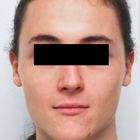
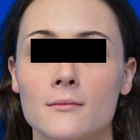
Front view
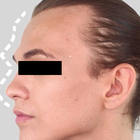

Half-side view
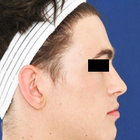
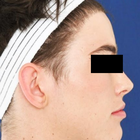
Full-side view
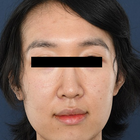

Front view
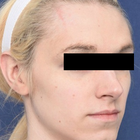

Half-side view
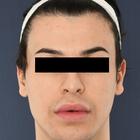
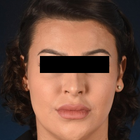
Front view
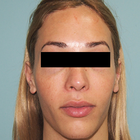

Front view
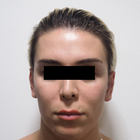

Front view
WHY US?
At Medijump, we're making medical easy. You can search, compare, discuss, and book your medical all in one place. We open the door to the best medical providers worldwide, saving you time and energy along the way, and it's all for FREE, no hidden fees, and no price markups guaranteed. So what are you waiting for?

Free

Best Price

Widest Selection

Risk-Free
What you need to know about Facial Feminization Surgery (FFS) in Vietnam
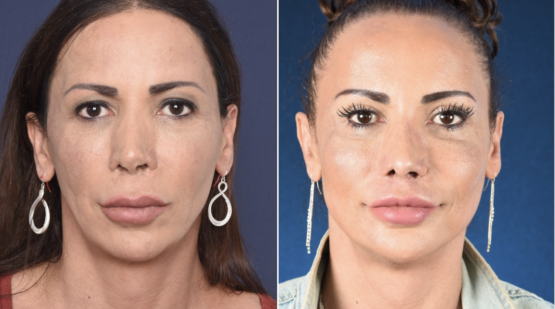
Facial Feminization Surgery, often abbreviated as FFS, is an extensive surgical process designed to modify masculine facial characteristics into a more feminine appearance. The procedure comprises several surgeries including rhinoplasty, forehead recontouring, and jaw and chin modifications. FFS is frequently sought after by transgender women desiring to more authentically express their gender identity. Any potential patient is advised to consult with a licensed surgeon to personalize the surgical plan according to their specific needs and aspirations.
Facial Feminization Surgery (FFS) usually necessitates an exhaustive pre-procedure assessment. This involves a thorough review of the patient's medical history, a complete physical examination, a psychological evaluation, and possibly facial x-rays. The surgeon will also discuss the aesthetic objectives, benefits, risks, and potential complications of the surgery with the patient. A collaborative decision-making approach is used to ensure patient safety and contentment following the procedure.
In this before and after example, the patient underwent Rhinoplasty, Chin recontouring, Jaw reduction, Lip lift, and eyelid surgery (blepharoplasty). The photo is taken 4 months post-op.
What is the cost of Facial Feminization Surgery (FFS) in Vietnam?
Various elements such as the surgical complexity, hospital stays, anesthesiologist costs, and surgeon's fees influence Facial Feminization Surgery (FFS) pricing in Vietnam. On average, possible charges vary from $20,000 up to $50,000. A detailed price breakdown from your healthcare provider will provide an exact view of the cost details.
The value of the procedure does not necessarily need to compromise the quality and standards of the surgery. Gain clarity about what components are inclusive and exclusive in the overall cost to understand thoroughly what your payment encompasses. Insurance firms usually do not cover aesthetic procedures, hence comprehensive knowledge and prudent financial preparation will streamline the procedure and make the Facial Feminization Surgery (FFS) a valid investment in enhancing your self-perception and assurance.
What does a Facial Feminization Surgery (FFS) Procedure Involve?
Facial Feminization Surgery (FFS) entails a range of tailored techniques aimed at personal needs with a focus on feminizing and gently modifying the facial structure. These techniques may encompass forehead reshaping, adjustments to the jaw and chin, rhinoplasty, facelifts, and other unique enhancements. The rising trend in health and well-being-oriented medical research is mirrored in personalized surgery schemes, ensuring the outcomes are attuned to individuals.
Normally, a care center will execute an in-depth consultation process to comprehend your aesthetic aspirations and draft a surgical blueprint. This evaluation is essential in harnessing the maximum advantages from the Facial Feminization Surgery (FFS). Ensuring the health and safety of the patient, a pre-operative assessment, encompassing a review of physical health and mental well-being, is a crucial measure.
How Long Should I Stay in Vietnam for a Facial Feminization Surgery (FFS) Procedure?
During the planning phase for Facial Feminization Surgery (FFS), considering the necessary time for the operation and subsequent recovery is vital, in order to ensure a seamless return to standard duties. The length of your Vietnam visit is heavily influenced by the surgery’s intricacy, your personal health condition, and your recovery speed. Generally, a timeframe of one to two weeks is advised before getting back to everyday activities.
However, the precise timeline can differ considerably, with follow-up meetings commonly arranged during your stay. These are paramount for evaluating your progress and identifying any possible surgical complications. This window also presents a chance for practising respiratory exercises and other preventive health methods to expedite a seamless recovery. Adherence to all the instructions given by your surgeon during this term is critical, as this significantly influences the success rate of the Facial Feminization Surgery (FFS).
What's the Recovery Time for Facial Feminization Surgery (FFS) Procedures in Vietnam?
Recovery from Facial Feminization Surgery (FFS) can differ among individuals, largely depending on the procedure's scope and the patient's overall health. Usually, patients require approximately six weeks of recuperation before they can engage in strenuous activities. During this time, individuals may experience swelling, bruising, and discomfort related to the surgery, but these symptoms typically diminish over time.
Getting plenty of rest, maintaining adequate hydration, and consuming a balanced diet can aid in accelerating recovery. It's vital to strictly follow the healthcare provider's advice regarding prescribed medicines, care of surgical wounds, and limitations on activities to prevent complications and promote healing. Keep in mind that health and well-being extend beyond the surgical procedure itself, so comprehensive aftercare is essential for successful outcomes.
What sort of Aftercare is Required for Facial Feminization Surgery (FFS) Procedures in Vietnam?
Appropriate aftercare is a vital component of successful Facial Feminization Surgery (FFS) and significantly influences the recovery process. It may include prescribed medications, regular medical check-ups, custom-made nutrition plans, and effective weight management. The recovery phase could span several weeks, during which adequate rest is paramount for a seamless recuperation.
Patients are often advised by their surgeons to temporarily abstain from rigorous physical activities and to maintain a healthy lifestyle. The latter should incorporate balanced nutrition, staying hydrated, taking supplements, and ensuring proper sleep and mental health management. It's important to note that adherence to the prescribed aftercare plan and attendance at follow-up visits are key to tracking improvements and promptly addressing any potential complications.
What's the Success Rate of Facial Feminization Surgery (FFS) Procedures in Vietnam?
Facial Feminization Surgery (FFS) is recognized as an extremely successful surgery that produces transformative and enduring outcomes. The success rate fluctuates depending on various factors, including the proficiency of the surgeon, the overall health of the patient, and the quality of care after the surgery. A majority of patients report high levels of satisfaction, citing increased self-confidence and an enhanced quality of life.
It's important to understand, however, that despite its high success rate, the procedure isn't without potential risks and complications. Complications like infections, scarring, and dissatisfaction with the aesthetic outcome are potential, though they are rare occurrences. Thorough pre-operative evaluations, skilled surgical hands, and comprehensive post-operative care significantly lessen these risks. Consequently, when selecting the most suitable protocol for your Facial Feminization Surgery (FFS), the guiding factors should be patient safety and satisfaction.
Check out this video for before and after images of FFS patients, you'll be amazed by some of the results made possible by this surgical procedure.
Are there Alternatives to Facial Feminization Surgery (FFS) Procedures in Vietnam?
Bear in mind that each person's needs and preferences are distinct, and surgical interventions might not be the most suitable route for everyone. There are other alternatives available for those who might be more inclined towards non-surgical solutions. Aesthetic treatments like injectable fillers, Botox, and others can simulate some effects of the Facial Feminization Surgery (FFS) on a temporary basis. However, cosmetic treatments of this kind typically necessitate ongoing sessions to preserve the sought after result.
Furthermore, some individuals might prefer to engage in psychological or behavioral therapies that encourage self-acceptance and a positive body image. Such therapies address the mental health components of self-image and gender dysphoria, offering a different perspective to surgery. Having open-ended discussions with healthcare providers to explore all the available options prior to making a decision is strongly advised.
What Should You Expect Before and After the Facial Feminization Surgery (FFS)?
Prior to undertaking Facial Feminization Surgery (FFS), patients participate in an in-depth consultation process. During this stage, surgeons evaluate the individual's health status, expectations, and motivations to design a treatment program that best meets their needs. Various health screenings may be conducted to verify the patient's physical suitability for the operation.
Post-procedure, initial weeks may bring about some degree of discomfort, swelling, and bruising, which will progressively decrease. Adequate post-procedure care can significantly improve recovery and the ultimate outcome of your Facial Feminization Surgery (FFS). It's crucial to maintain regular communication with your surgeon and promptly report any unusual symptoms. The goal is to ensure a successful surgical procedure followed by a rapid and smooth recovery, guiding you towards a more self-assured version of yourself.
What is the Preoperative Preparation for Facial Feminization Surgery (FFS) in Vietnam?
Preparing for Facial Feminization Surgery (FFS) entails addressing both physical and mental aspects to ensure successful surgery and recuperation. Patients undergo comprehensive evaluations involving various diagnostic tests to determine their overall health and suitability for the surgery. Moreover, patients may need to halt tobacco use, moderate alcohol consumption, and adjust certain medications—especially those affecting blood clotting—as these factors could disrupt both the surgical process and healing.
In addition, therapy sessions may be suggested to assist individuals in managing the psychological implications of such a life-changing procedure. A balanced diet is also pivotal in enhancing the body's healing capacity; adopting a healthy eating regimen, such as the Mediterranean diet, and considering suitable nutritional supplements can optimize preoperative preparation. Emphasizing mental wellbeing is another vital aspect of the journey, and implementing stress management strategies can prove beneficial during this period.
What are the Long-term Implications of Facial Feminization Surgery (FFS) in Vietnam?
Facial Feminization Surgery (FFS) is often viewed as a long-term commitment that yields lasting and significant transformations. It significantly enhances self-image and self-confidence, leading to a substantial improvement in life quality. Though the changes induced by the surgery are generally unchanging, sustaining a consistent weight and adopting a healthy lifestyle are vital in preserving the results.
It's important to bear in mind that adjusting psychologically is an integral aspect of such a transformative experience. Individual or group therapies can aid in navigating these changes, fostering deep-seated growth and self-understanding following the Facial Feminization Surgery (FFS). Always remember, the success of a procedure goes beyond the physical alteration—it also involves overall wellbeing, health, and a positive life perspective.
Whilst the information presented here has been accurately sourced and verified by a medical professional for its accuracy, it is still advised to consult with your doctor before pursuing a medical treatment at one of the listed medical providers
No Time?
Tell us what you're looking for and we'll reachout to the top clinics all at once
Enquire Now

Popular Procedures in Vietnam
Prices Start From $96

Prices Start From $111

Prices Start From $70

Prices Start From $16

Prices Start From $220

Prices Start From $28

Prices Start From $672

Prices Start From $275

Prices Start From $101

Prices Start From $556

Prices Start From $4,377

Recommended Medical Centers in Vietnam for Facial Feminization Surgery (FFS)

- Interpreter services
- Translation service
- Religious facilities
- Medical records transfer
- Medical travel insurance
- Health insurance coordination
- TV in the room
- Safe in the room
- Phone in the room
- Private rooms for patients available

- Interpreter services
- Translation service
- Religious facilities
- Medical records transfer
- Medical travel insurance
- Health insurance coordination
- TV in the room
- Safe in the room
- Phone in the room
- Private rooms for patients available

- Interpreter services
- Translation service
- Religious facilities
- Medical records transfer
- Medical travel insurance
- Health insurance coordination
- TV in the room
- Safe in the room
- Phone in the room
- Private rooms for patients available

- Interpreter services
- Translation service
- Religious facilities
- Medical records transfer
- Medical travel insurance
- Health insurance coordination
- TV in the room
- Safe in the room
- Phone in the room
- Private rooms for patients available

- Interpreter services
- Translation service
- Religious facilities
- Medical records transfer
- Medical travel insurance
- Health insurance coordination
- TV in the room
- Safe in the room
- Phone in the room
- Private rooms for patients available

- Interpreter services
- Translation service
- Religious facilities
- Medical records transfer
- Medical travel insurance
- Health insurance coordination
- TV in the room
- Safe in the room
- Phone in the room
- Private rooms for patients available

- Interpreter services
- Translation service
- Religious facilities
- Medical records transfer
- Medical travel insurance
- Health insurance coordination
- TV in the room
- Safe in the room
- Phone in the room
- Private rooms for patients available

- Interpreter services
- Translation service
- Religious facilities
- Medical records transfer
- Medical travel insurance
- Health insurance coordination
- TV in the room
- Safe in the room
- Phone in the room
- Private rooms for patients available

- Interpreter services
- Translation service
- Religious facilities
- Medical records transfer
- Medical travel insurance
- Health insurance coordination
- TV in the room
- Safe in the room
- Phone in the room
- Private rooms for patients available

- Interpreter services
- Translation service
- Religious facilities
- Medical records transfer
- Medical travel insurance
- Health insurance coordination
- TV in the room
- Safe in the room
- Phone in the room
- Private rooms for patients available
Facial Feminization Surgery (FFS) in and around Vietnam
About Vietnam
Situated at the extreme east of the Indochina Peninsula, Vietnam is a country that exhibits profound cultural richness and captivating landscapes. It holds the distinction of being the world's 15th most populous country, housing over 94 million residents scattered across its diverse geographical expanse. Despite grappling with issues like poverty and corruption, Vietnam's impressive economic performance cannot be overlooked. Notably, the country boasts a commendable GDP growth rate and is celebrated as one of the fastest-growing economies globally.
This country is well-known around the globe for its breathtaking natural beauty. It's also recognized for its energetic, larger-than-life cities that are always buzzing with activity. Furthermore, its culture is intricate and assorted, attracting millions who appreciate rich customs and traditions. In 2018, this place was a magnet for tourists, drawing in over 15 million visitors who were eager to immerse themselves in its unique way of life.
Broadly celebrated for its splendid scenic landscapes, there's an undeniable charm this country possesses. The vivacious megacities are a thrilling fusion of noise, colors, and life that leaves an impression on all who stroll through them. The cultural mosaic of this land is complex, and varied, presenting evidence of a fascinating history shared through countless generations. The year 2018 saw floods of tourists - well in excess of 15 million - come to explore, each leaving with their own tale of discovery within its borders.
The rapid development of Vietnam has made it into the next medical tourism hub in Southeast Asia. Now, medical tourists consider the country as their potential medical destination. Many new medical centers have sprung up and welcomed thousands of patients to relax and enjoy their treatment. The country offers a wide range of cost-effective medical treatment, well-trained doctors, and professional equipment. The country focuses on promoting medical tourism to neighboring markets such as Laos and Cambodia.
Popular Parts of Vietnam
- Ho Chi Minh, formerly Saigon, is the most populous city in Vietnam. It is the financial center and home to the largest stock exchange in the country. Tourists coming to the city can enjoy its many tourist spots such as shopping in the Ben Thanh Market, viewing the city from Saigon Skydeck, discovering the city’s history from The War Remnants Museum, or learning the culture of Jade Emperor Pagoda. Other than the attractions, the city is also famous for its traditional food, including pho and pork rolls.
- Hanoi is the capital of Vietnam and the country’s major metropolitan and political center. Tourists will find many well-preserved colonial buildings, museums, and pagodas. As one of the most ancient capitals in the world, most tourists will be delighted to explore the city’s historic Old Quarter, spend a beautiful day in Hoan Kiem Lake, or visit the Temple of Literature.
- Hoi An invites tourists to experience a slow-paced, relaxing lifestyle. The city’s Old Town has successfully preserved Japanese merchant houses and Chinese temples. To get a glimpse of the city, many tourists will opt for a bicycle tour. The city also offers a unique farming and fishing experience for its visitors. Off the coast of the city, tourists will be overjoyed to find a diving paradise with hundreds of different coral and fish.
- Nha Trang is a coastal city on the South Central Coast of the country. Tourists usually come to this city for its stunning white sandy beaches and scuba diving. In addition to the beautiful beaches, Nha Trang Bay is considered to be one of the world’s most beautiful bays. The city is also home to the remnants of the Champa Kingdom, gothic-style Catholic churches, and many Buddhist temples.
- Da Nang is located on the coast of the South China Sea, making it the most important port city of Vietnam. The city continues to evolve each year, with modern hotels and restaurants being developed all around it. It is the tourist capital of South Central Vietnam. Tourists visit the city to enjoy its tranquil beaches with crystal clear waters, beautiful ancient pagodas, interesting French colonial buildings, and green national parks.
Weather and Climate in Vietnam
Vietnam, situated uniquely on the map, experiences differing climates in its varied regions. If you travel south, you'll find a tropical monsoon climate. This climate type typically comes with two main seasons - the wet season and the dry season.
Straying north, however, you'll encounter a different story altogether. Here, the climate is categorized as monsoonal but it's accompanied by four clear-cut seasons - spring, summer, autumn, and winter. So, regardless of the time of year, there's a high chance you'll experience a unique slice of Vietnamese weather, depending entirely on which part of the country you've set foot in.
- The south experiences wet and dry season and the wet season lasts from September to December. There is more rainfall between September and November. The dry season starts in January and ends in August and the average annual temperature is around 26 °C. Some cities such as Da Nang are prone to typhoons during the wet season.
- In the north, spring starts in February characterized by some rain and cold temperature. The end of April is the start of summer, with intense sunshine and sometimes even a heatwave. The average temperature during Summer is 27.5 °C but it can feel a lot hotter. Autumn starts in September and ends in November. Autumn has the best weather, with a lot of sunshine and calm wind. From December to January is Winter and it is generally cold with an average temperature of 17 °C which can drop as low as 7 °C.
Getting Around in Vietnam
There are numerous airports in Vietnam that connect the major cities. However, there are three major international airports where international visitors usually arrive at, Ho Chi Minh, Hanoi, and Da Nang. Most international flights will arrive at Tan Son Nhat International Airport which serves domestic and international flights to and from major cities in Asia, Europe, and Australia. In terms of capacity, the biggest airport in the country is the Noi Bai International Airport in Hanoi.
The airport is a hub for both local and global travel. It houses two terminals within its boundaries. Terminal 1 is tasked with the management of domestic flights, servicing those traveling within the country's borders. On the other hand, Terminal 2 oversees international flight operations, connecting this airport to numerous cities across Asia and Europe. Affordable airlines, including the likes of Jetstar Pacific and VietJet Air, schedule flights departing from and arriving at both Tan Son Nhat and Noi Bai airports - a testament to the airport's reach and convenience to travelers with varying budget needs.
Tourists do have a few travel options to get around Vietnam. The country is served by trains running from Ho Chi Minh City to Hanoi and it stops in many of the popular areas such as Da Nang and Nha Trang. Buses are a great option for tourists to get around the country and the buses are privately operated buses called “open tour” buses. There is also a national bus system, but they are generally not as comfortable as the private buses.
Taxis are available in most cities and can be hailed directly from the streets or via a phone call. The fare usually starts at VND 10,000 to VND 12,000. If you need to be quick, try the motorcycle taxis known as Xe Om. You will need to negotiate the price but they can be found in most parts of the cities. Cyclo (similar to trishaw) is also available for short-distance travel within a city. For easier travel, opt for Grab Motorbike, an online hailing app similar to Uber.
Tourist Visas in Vietnam
- Citizens of 24 countries, including Singapore, Thailand, Russia, and Japan, can enter and stay in Vietnam for up to 90 days without a visa.
- Citizens of 81 countries, including the United States, the European Union, and Canada, can apply for an e-visa. An e-visa is a single-entry visa that allows the holder to stay in Vietnam for up to 30 days.
- Citizens of all other countries need to apply for a visa at a Vietnamese embassy or consulate.
How to apply for an e-visa:
- To apply for an e-visa, you will need to create an account on the Vietnam e-Visa website and complete an online application form. You will also need to upload a digital photo of yourself and a scan of your passport.
- The e-visa fee is USD 25.
- Once your application is approved, you will receive an e-visa by email. The e-visa must be printed out and presented to immigration officials upon arrival in Vietnam.
Additional information:
- All visitors to Vietnam must have a passport valid for at least six months beyond their intended date of departure from Vietnam.
- Visitors who obtain an e-visa must have a valid passport and a digital photo.
- Visitors who apply for a visa at a Vietnamese embassy or consulate may also need to provide additional documentation, such as a proof of onward travel or a letter of invitation.
Additional Information
- Local Currency: The official currency is the Vietnamese Dong and 1 USD converts to VND 24,455.
- Money & Payments: ATMs are widely available throughout the country. Credit and debit cards are accepted in many hotels but most restaurants and shops still only accept cash. Tipping is generally not expected but will be appreciated.
- Local Language: Vietnamese is the local language. English is not widely spoken, but if you are staying in popular tourist areas, there will be people who can speak some English.
- Local Culture and Religion: Most of the population follows the Vietnamese folk religion. Buddhism, Christianity, Hoahaoism, Islam, and Hinduism are also freely practiced.
- Public Holidays: The country celebrates major religious and national holidays such as New Year’s Day, Saigon Liberation Day, and Vietnam Traditional Lunar New Year.
Popular Searches
- Plastic Surgery in Thailand
- Dental Implants in Thailand
- Hair Transplant in Thailand
- Breast Augmentation Thailand
- Gastric Sleeve in Thailand
- Gender Reassignment Surgery in Thailand
- Laser Hair Removal in Bangkok
- Botox in Bangkok
- Dermatology in Bangkok
- Breast Augmentation in Bangkok
- Coolsculpting in Bangkok
- Veneers in Turkey
- Hair Transplant in Turkey
- Rhinoplasty in Turkey
- Stem Cell Therapy in Mexico
- Rhinoplasty in Mexico
- Liposuction in Mexico
- Coolsculpting in Tijuana
- Rhinoplasty in Korea
- Scar Removal in Korea
- Gastric Sleeve in Turkey
- Bone Marrow Transplant in India
- Invisalign in Malaysia
- Plastic Surgery in the Dominican Republic
- Tummy Tuck in the Dominican Republic
- Plastic and Cosmetic Surgery in Poland
- Rhinoplasty in Poland
- Hair Implant in Poland
- Dental Implants in Poland
- IVF in Turkey
